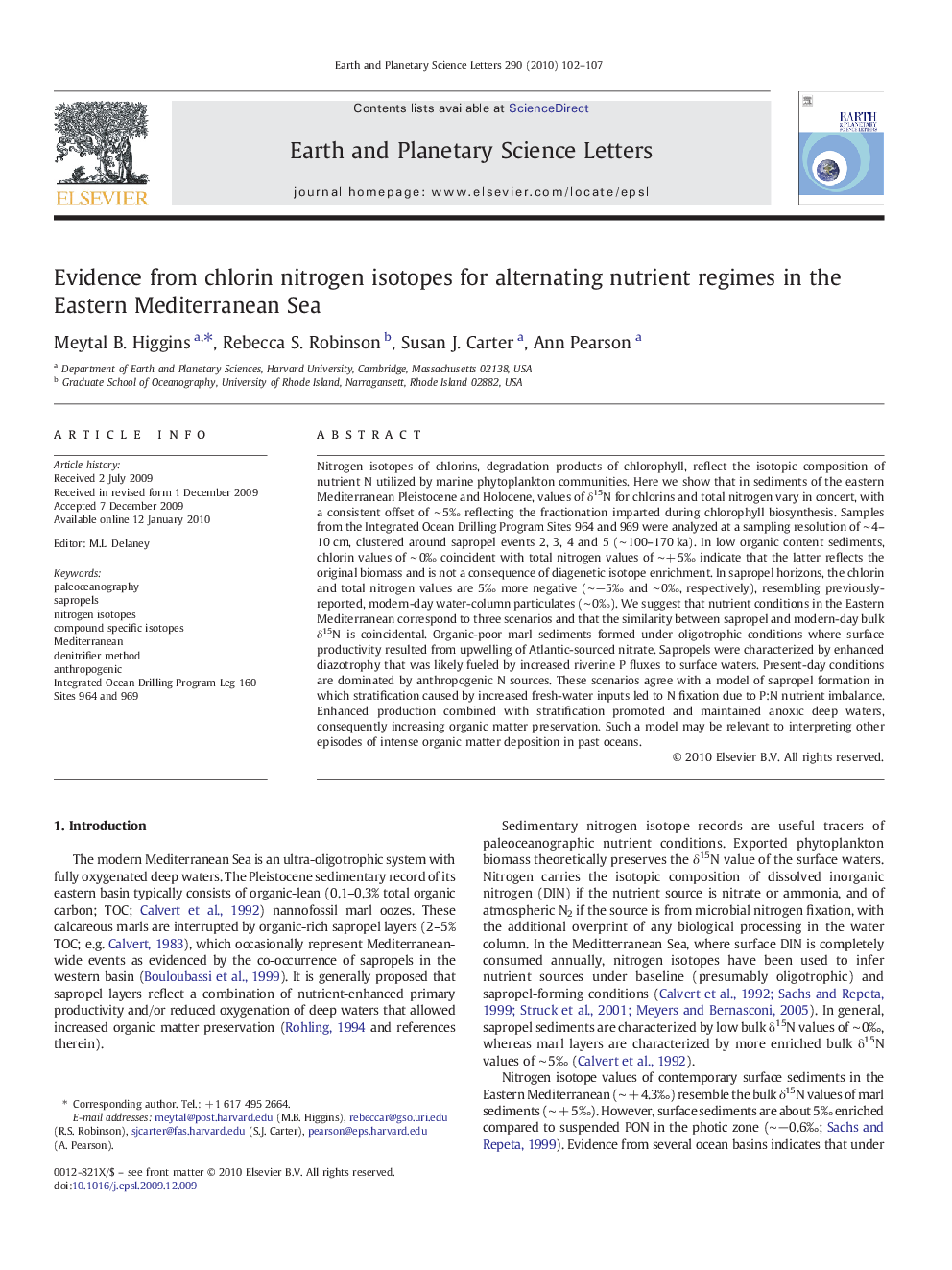| کد مقاله | کد نشریه | سال انتشار | مقاله انگلیسی | نسخه تمام متن |
|---|---|---|---|---|
| 4678716 | 1634859 | 2010 | 6 صفحه PDF | دانلود رایگان |

Nitrogen isotopes of chlorins, degradation products of chlorophyll, reflect the isotopic composition of nutrient N utilized by marine phytoplankton communities. Here we show that in sediments of the eastern Mediterranean Pleistocene and Holocene, values of δ15N for chlorins and total nitrogen vary in concert, with a consistent offset of ∼ 5‰ reflecting the fractionation imparted during chlorophyll biosynthesis. Samples from the Integrated Ocean Drilling Program Sites 964 and 969 were analyzed at a sampling resolution of ∼ 4–10 cm, clustered around sapropel events 2, 3, 4 and 5 (∼ 100–170 ka). In low organic content sediments, chlorin values of ∼ 0‰ coincident with total nitrogen values of ∼+ 5‰ indicate that the latter reflects the original biomass and is not a consequence of diagenetic isotope enrichment. In sapropel horizons, the chlorin and total nitrogen values are 5‰ more negative (∼−5‰ and ∼ 0‰, respectively), resembling previously-reported, modern-day water-column particulates (∼ 0‰). We suggest that nutrient conditions in the Eastern Mediterranean correspond to three scenarios and that the similarity between sapropel and modern-day bulk δ15N is coincidental. Organic-poor marl sediments formed under oligotrophic conditions where surface productivity resulted from upwelling of Atlantic-sourced nitrate. Sapropels were characterized by enhanced diazotrophy that was likely fueled by increased riverine P fluxes to surface waters. Present-day conditions are dominated by anthropogenic N sources. These scenarios agree with a model of sapropel formation in which stratification caused by increased fresh-water inputs led to N fixation due to P:N nutrient imbalance. Enhanced production combined with stratification promoted and maintained anoxic deep waters, consequently increasing organic matter preservation. Such a model may be relevant to interpreting other episodes of intense organic matter deposition in past oceans.
Journal: Earth and Planetary Science Letters - Volume 290, Issues 1–2, 15 February 2010, Pages 102–107